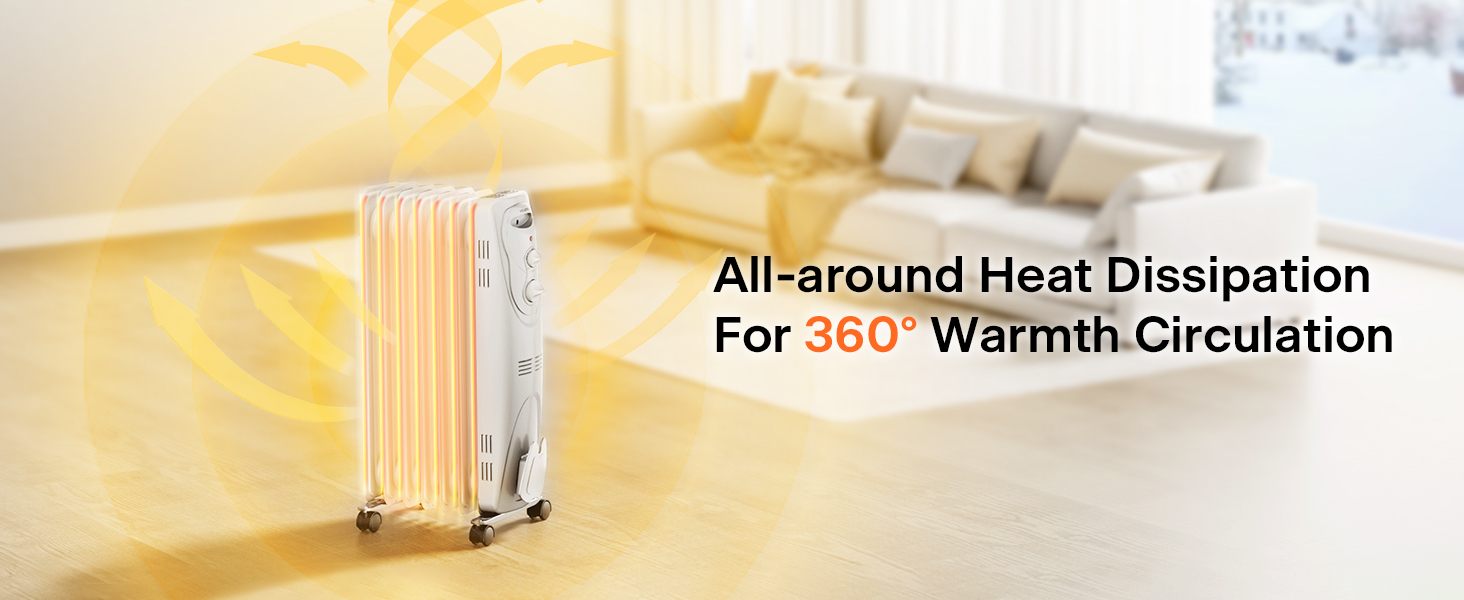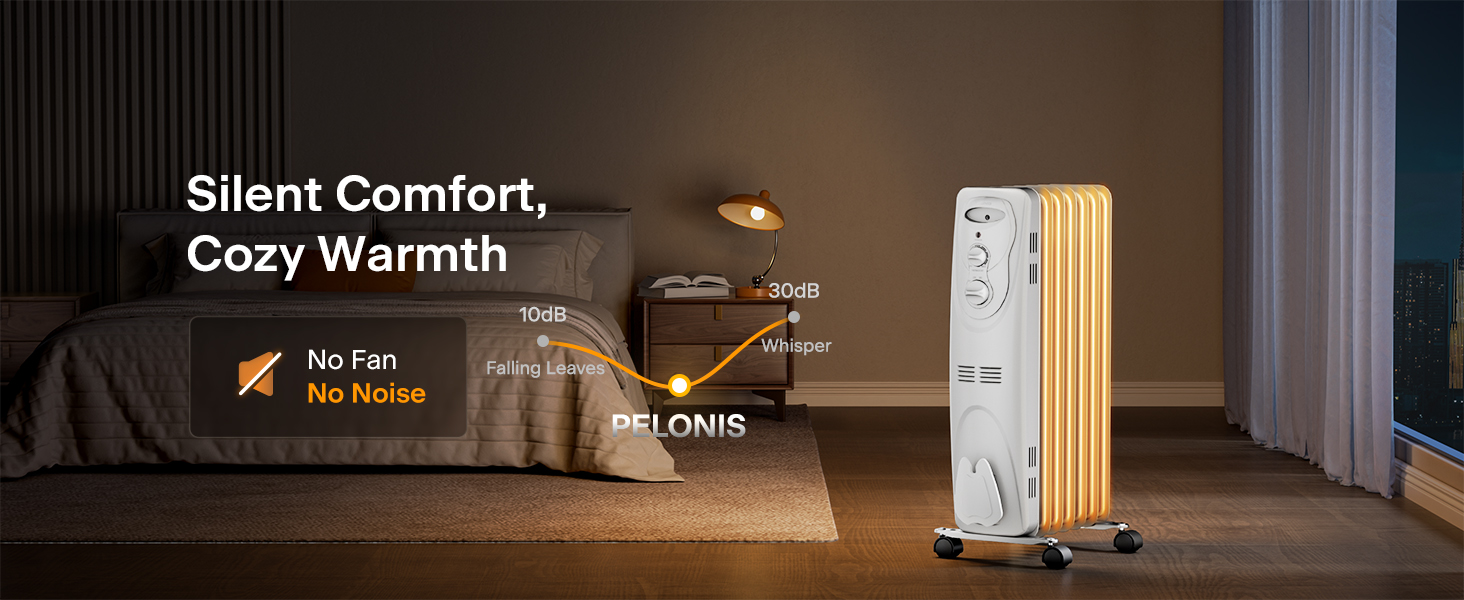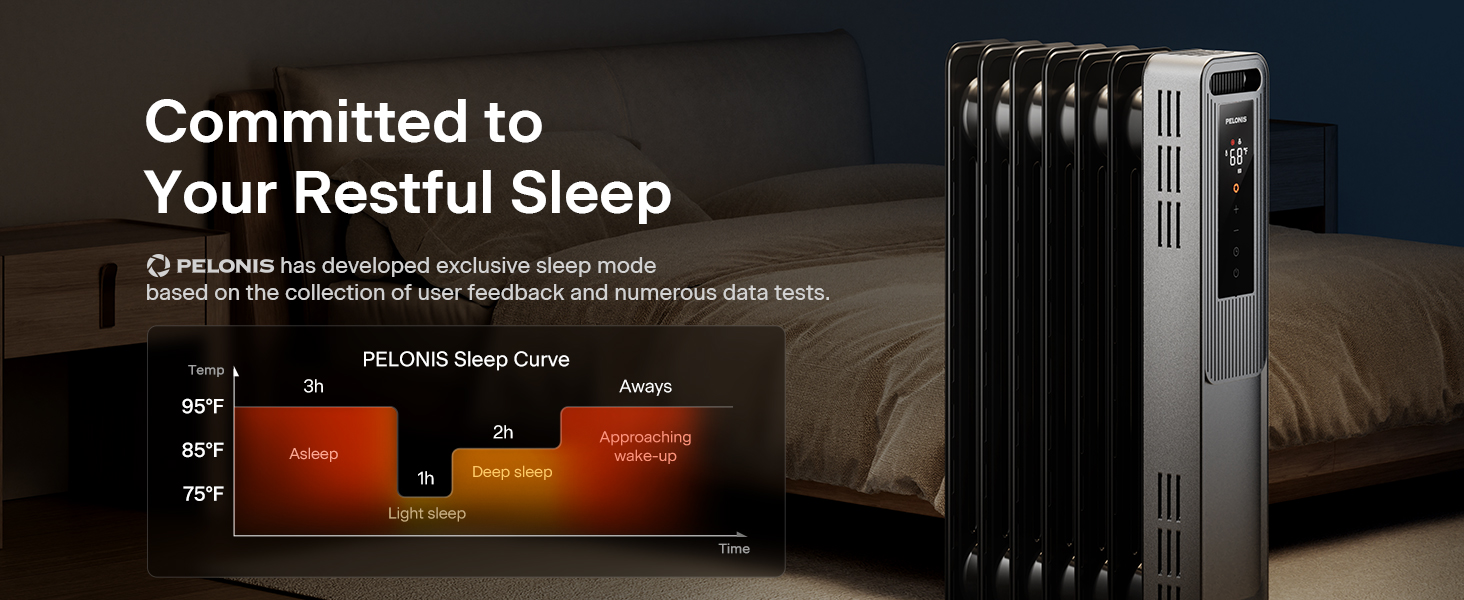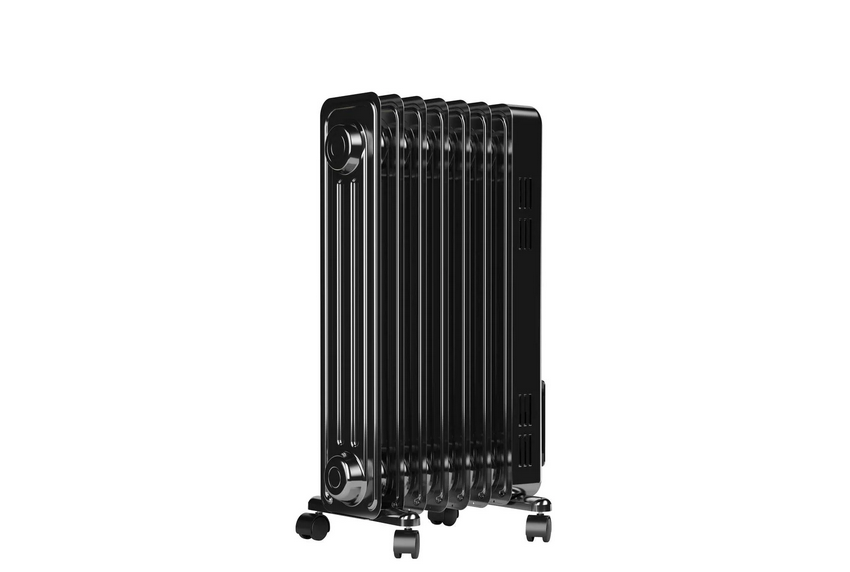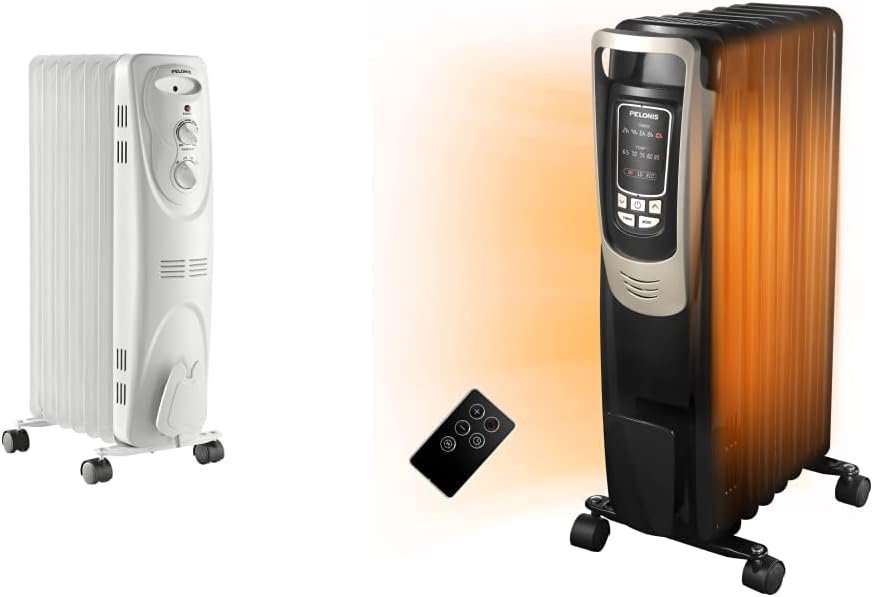Pelonis Electric 1500w Oil Filled Radiator Heater
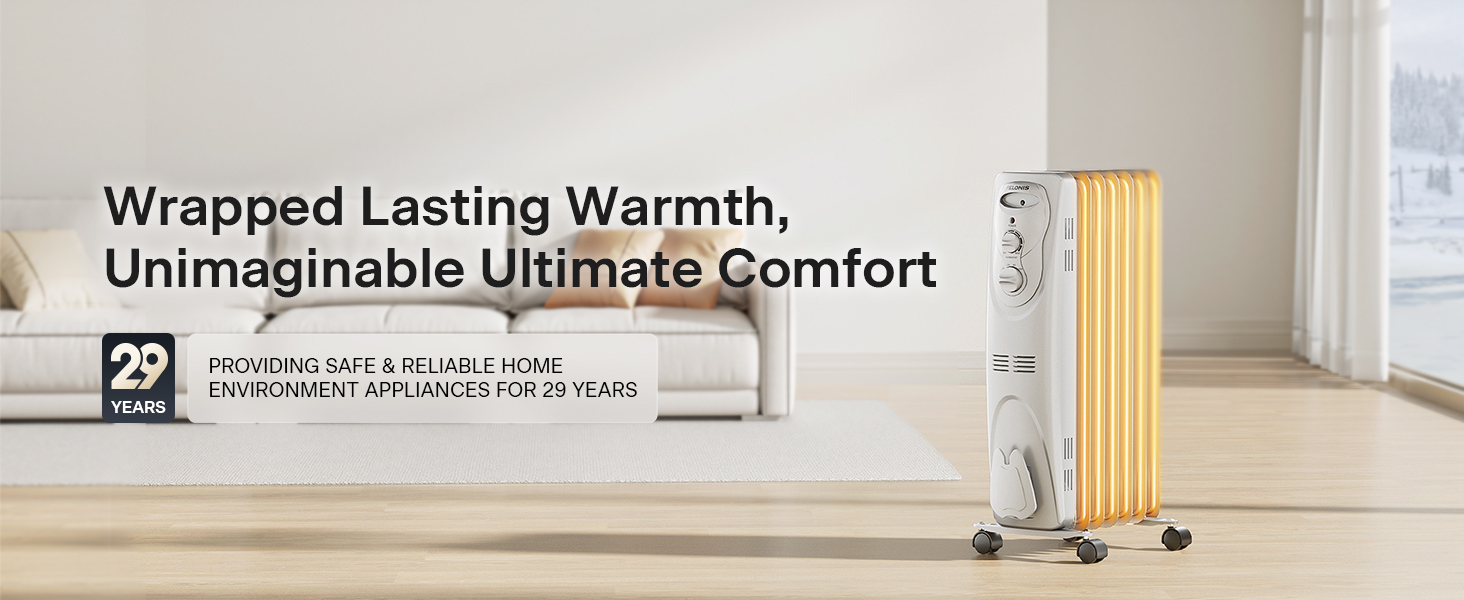
Oil-filled radiator heaters offer a supplemental heating solution, often used to add warmth to individual rooms or small spaces. The Pelonis Electric 1500W Oil Filled Radiator Heater is a popular choice in this category, known for its portability and relatively quiet operation. This article provides a detailed overview of the Pelonis 1500W oil-filled radiator heater, covering its features, performance, cost considerations, and suitability for various applications.
How Oil-Filled Radiator Heaters Work
Unlike conventional space heaters that directly heat the air, oil-filled radiators employ a different approach. They use electricity to heat a diathermic oil contained within the radiator's metal fins. This heated oil then radiates warmth into the surrounding environment. The oil acts as a heat reservoir, allowing the heater to maintain a consistent temperature for a longer period, even after the unit cycles off. This contributes to a more even and comfortable heat distribution compared to some other types of space heaters.
The "1500W" designation refers to the heater's maximum power consumption. At its highest setting, the Pelonis 1500W unit will draw 1500 watts of electricity. Most models offer multiple heat settings, allowing users to adjust the power consumption and heat output based on their needs.
Pelonis 1500W Oil Filled Radiator Heater: Features and Specifications
The Pelonis 1500W oil-filled radiator typically includes the following features:
- Adjustable Thermostat: This allows users to set a desired room temperature, and the heater will automatically cycle on and off to maintain that temperature. This prevents overheating and conserves energy.
- Multiple Heat Settings: These heaters typically offer low, medium, and high heat settings, providing flexibility in controlling heat output and energy consumption.
- Overheat Protection: A crucial safety feature that automatically shuts off the heater if it detects an abnormally high temperature, preventing potential fire hazards.
- Tip-Over Switch: Another important safety feature that immediately turns off the heater if it's accidentally knocked over.
- Carry Handle and Casters: These features enhance portability, allowing users to easily move the heater from room to room.
- Digital Display and Controls (on some models): Higher-end Pelonis models might feature a digital display for temperature settings and a programmable timer for automatic operation.
Typical specifications include:
- Power Consumption: 1500 Watts (maximum)
- Voltage: 120V (standard US voltage)
- Number of Fins: Varies by model, but generally ranges from 7 to 9 fins. More fins typically provide better heat distribution.
- Dimensions: Varies by model, but generally around 25 inches high, 15 inches wide, and 10 inches deep.
- Weight: Typically between 15 and 20 pounds.
Performance and Efficiency
The Pelonis 1500W oil-filled radiator is best suited for heating small to medium-sized rooms. While the 1500W power rating is standard for many space heaters, the oil-filled design offers advantages in terms of heat distribution and consistency. Because the oil retains heat, the heater continues to radiate warmth even after the heating element cycles off, resulting in a more stable and comfortable room temperature. This also reduces the frequency of on/off cycles, potentially saving energy.
However, it's important to understand the limitations of these heaters. They are not designed to heat large areas or to serve as the primary heating source for an entire home. Compared to central heating systems like furnaces or heat pumps, oil-filled radiators are less efficient on a whole-house basis. Their primary benefit lies in providing supplemental heating to specific rooms where needed.
Energy Efficiency Considerations: While oil-filled radiators are generally considered more efficient than some other types of resistance heaters (like those with exposed heating coils) due to their heat retention capabilities, they are still resistance heaters and convert electricity directly into heat. This process is inherently less efficient than heat pump technology, which transfers heat rather than generating it. Therefore, while a Pelonis 1500W oil-filled radiator might be efficient for spot heating, it's not the most energy-efficient option for heating larger spaces or for long-term use. Homeowners concerned about energy consumption should consider using these heaters strategically, supplementing existing heating systems and focusing on heating only occupied rooms.
Cost Analysis: Purchase Price and Operating Costs
The purchase price of a Pelonis 1500W oil-filled radiator typically ranges from $50 to $100, depending on the model and features. Models with digital displays, programmable timers, and more fins tend to be more expensive. Compared to other types of space heaters, oil-filled radiators are often slightly more expensive upfront, but their potential for more consistent heat and quieter operation can justify the higher cost for some users.
The operating cost depends on the electricity rate and usage patterns. To calculate the hourly operating cost, use the following formula:
(Wattage / 1000) x Electricity Rate (per kWh) = Hourly Cost
For example, if the electricity rate is $0.15 per kWh, the hourly cost of running the Pelonis 1500W heater at its maximum setting would be:
(1500 / 1000) x $0.15 = $0.225 per hour
Keep in mind that the heater will not run continuously at 1500W, as the thermostat will cycle the heater on and off to maintain the set temperature. The actual operating cost will depend on the room's insulation, the desired temperature, and the heater's thermostat settings.
Long-Term Cost Considerations: While the initial purchase price is relatively low, the long-term operating costs of oil-filled radiators can add up, especially if used frequently or to heat large areas. For example, a homeowner consistently using the heater for several hours each day during the winter months could see a noticeable increase in their electricity bill. It's important to weigh the convenience and comfort benefits against the potential operating costs.
Applications: Who Benefits Most?
The Pelonis 1500W oil-filled radiator is a suitable heating solution for a variety of situations:
- Homeowners: Ideal for providing supplemental heat to bedrooms, offices, or living rooms, especially in homes with inadequate central heating or drafty areas.
- Apartment Dwellers: A good option for adding warmth to apartments where residents have limited control over the central heating system.
- Offices: Suitable for individual office spaces where employees need localized heating.
- Garages and Workshops: Can provide temporary heat in garages or workshops during colder months (ensure proper ventilation).
- Property Managers: Useful for providing temporary heating in vacant apartments or during maintenance periods.
Considerations for Facility Managers: While oil-filled radiators can offer a quick solution for spot heating in commercial buildings, facility managers should carefully evaluate their overall heating needs and energy efficiency goals. For larger areas or for providing consistent heating throughout a building, central heating systems or high-efficiency heat pumps are generally more cost-effective and energy-efficient options. Oil-filled radiators should be considered as supplemental heating solutions for specific areas or situations, rather than as a primary heating source.
Safety Considerations
While Pelonis oil-filled radiators incorporate safety features like overheat protection and tip-over switches, it's important to follow these safety guidelines:
- Never leave the heater unattended while it's operating.
- Keep flammable materials (curtains, furniture, bedding) at least 3 feet away from the heater.
- Do not use the heater in bathrooms or other damp environments.
- Ensure the heater is placed on a stable, level surface.
- Do not cover the heater.
- Regularly inspect the power cord for damage.
- Never use an extension cord with the heater.
Maintenance
Pelonis oil-filled radiators require minimal maintenance. The oil is sealed within the unit and does not need to be refilled. Simply keep the exterior clean by wiping it down with a damp cloth. Periodically inspect the power cord for damage. If the heater is not being used for an extended period, store it in a dry place.
Alternatives to Oil-Filled Radiators
Homeowners and facility managers have several alternatives to oil-filled radiators, each with its own advantages and disadvantages:
- Ceramic Heaters: These heaters use a ceramic heating element and a fan to quickly heat the air. They are generally more compact and lightweight than oil-filled radiators but may not distribute heat as evenly.
- Infrared Heaters: These heaters emit infrared radiation that directly heats objects and people in the room. They are energy efficient for spot heating but may not be suitable for heating an entire room.
- Heat Pumps: Heat pumps are significantly more energy-efficient than resistance heaters and can provide both heating and cooling. However, they are more expensive to install and may not be as effective in extremely cold climates.
- Forced Air Heaters (Central Heating): Furnaces provide whole-house heating by heating air and circulating it through ductwork. These systems are more complex and expensive to install than space heaters, but they are more efficient for heating larger areas.
Conclusion
The Pelonis Electric 1500W Oil Filled Radiator Heater provides a convenient and relatively quiet supplemental heating solution for small to medium-sized rooms. Its heat retention capabilities and safety features make it a popular choice for homeowners, apartment dwellers, and office workers. However, it's important to consider its energy consumption and limitations as a primary heating source. By carefully evaluating heating needs, usage patterns, and available alternatives, individuals and facility managers can determine whether the Pelonis 1500W oil-filled radiator is the right heating solution for their specific application.

